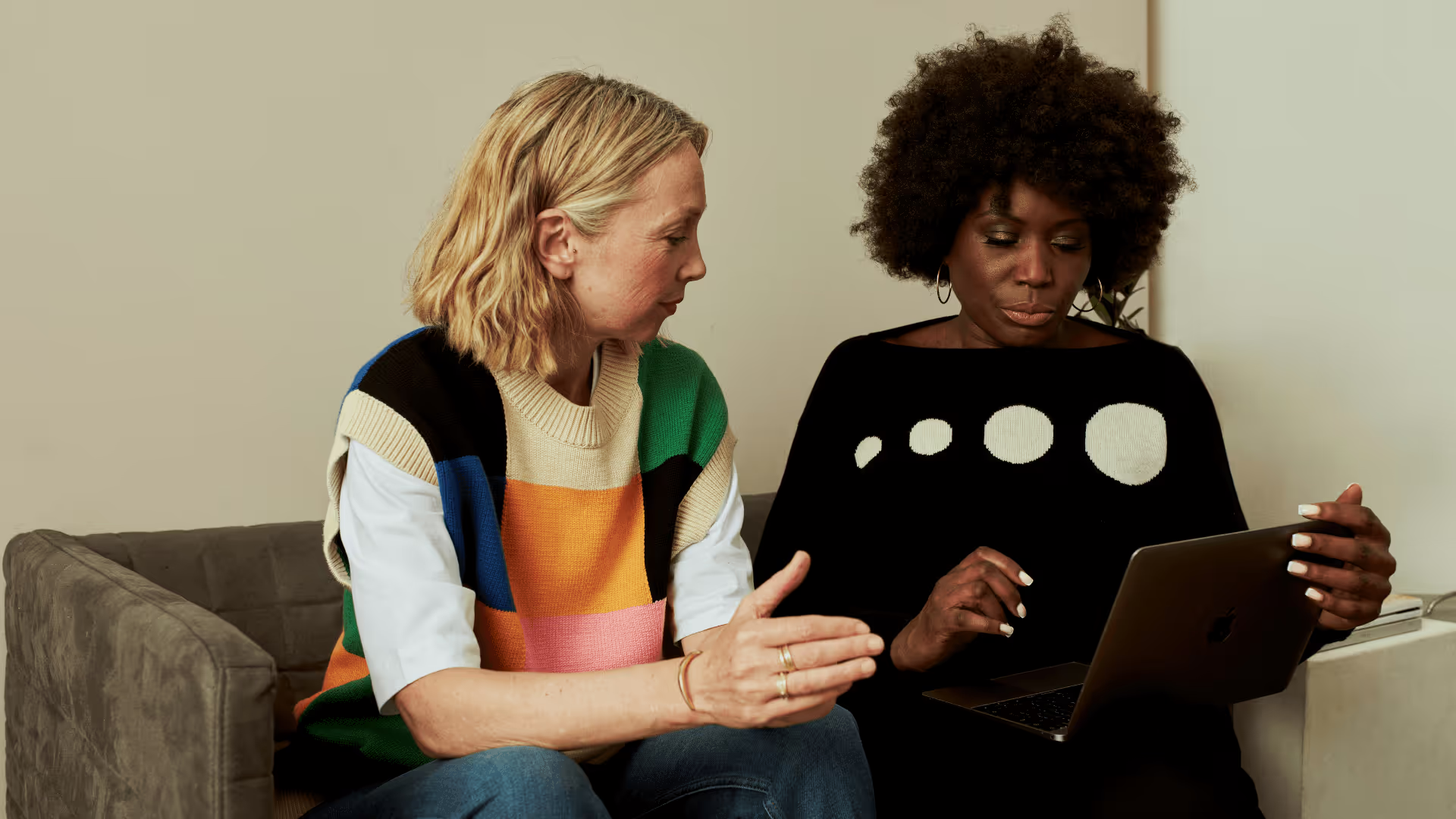Up Close with a Cool, Sustainable Brand: Patrick Cupid
Our powerful digital wholesale platform offers emerging designers a powerful tool to help grow their brand. Patrick Cupid, named ‘One to Watch’ by Industry. Fashion, shares his success story in our latest blog.
.avif)
Up Close with a Cool, Sustainable Brand: Patrick Cupid
American designer Patrick Cupid launched his eponymous brand in 2017. Trained at F.I.T. and Parsons in New York and Italy’s Politecnico di Milano, Patrick has worked between the US and Europe for more than ten years. His work exemplifies a “semi-style” that crosses boundaries and occasions; a seamless blend of luxury, professional, avant-garde, and casual that remains uniquely individual.
His fluid, cultured, and sustainable approach to design has earned him many accolades. An F.I.T. Critics Choice Award winner in 2013, Patrick received the CFDA Harlem Fashion Row Icon 360 grant in 2020, was named ‘One to Watch’ by Industry.Fashion, and has been nominated for two La Jolla International Fashion Film 2021 awards.
We had a chance to chat with Patrick about his brand, his newest collection, and his plans for what comes next.
Tell us a bit about your approach
It’s a new take on American style. A new perspective, a new point of view. One of the key points of my work is a very strong sense of colour. I use very art-inspired prints, whether geometric or in a more painterly, abstracted style: very fluid in form and motion.
People want to know what’s behind the brand, the research and the inspiration and everything that goes into each collection. For me that’s always about delving into the culture behind the concept, behind the ideas that are reflected in the styles, the shapes, the colors. The prints aren’t just pulled out of nowhere; I sift through detailed information and history.
What was the inspiration for your newest collection?
My most recent collection, Agrestal, plays into modern fantasy. It starts with a fable: the story of a woman who resides in a forest world, but who emerges from it to discover the new world of the city. Nature is rough. It’s not about even forms, perfect circles and squares. It’s full of shapes with no names that are beautiful just as they are. And unique. No two flowers are exactly alike, no two trees. Nothing in nature has an exact copy.
And with that comes a great deal of sentimental value, because you appreciate items as they are. Rough or smooth, old or new. The story touches on that. With the knitwear, I played with the notion of hand-me-downs. Some might have been passed through generations, others might have needed repair or been repurposed: cut up to make a more contemporary version. To help the heroine fulfil her idea of what life in this new urban world is like.
The heroine of the collection is an outsider to this new world—and that’s okay. You can come from one world, like the forest, and have love and respect and appreciation for it. But it doesn’t have to be all of who you are. You can be curious, seek to discover other worlds, other facets, other parts of yourself.
Do you have any favorite pieces?
My favorite was definitely the hand-me-down sweater, and the grandmother’s dress is probably my second favorite. Then the jumpsuit, which was a surprise. It’s the first jumpsuit I’ve done for the brand. The print is a little different every time. When I saw it during the photoshoot...I don’t get super-sentimental but I was almost in tears.
You said the print is different each time: why is that?
My pieces are not cut to match. I believe in responsible design, so I try to consume as much of the fabric as possible, to leave as little waste as possible. The prints are never designed to match up: any way you cut them, you’ll always get something new. Every size is similar but distinct. It mimics nature, so everyone gets something unique and special.
You built sustainability into your design ethos. Can you talk to us about that?
I am a child of the city, but my heart also belongs to nature. I understand how much waste fashion can create and I don’t want to do that. I use as many natural fibers as possible. I create the prints so we use as much of the fabric as possible, in as many ways as we can. When skirts are pleated, I cut in a full circle rather than A-line, in order to fully use the yardage. If I have leftover fabrics from previous collections, I’ll move them forward or use them for sampling. I’ll bucket-dye them myself, or turn them into linings.
I even used deadstock in my most recent collection. It’s a tricky choice: if there are a lot of orders, I won’t be able to replace it. But I fell in love with the fabric, and felt not only that it was right for the collection, but was also glad that the fabric wasn’t going to landfill.
How did you decide to work with JOOR?
Mine is a fairly new brand. I had been looking for ways to get the collection out there, to let people know about it. Finding new avenues, alternate routes to get in front of an audience is always a concern. So I had already been researching online platforms. Then the pandemic hit.
I was able to call JOOR, to talk to the folks there, and really have a conversation about what they have to offer. Then I won the Icon 360 grant. The CFDA partners with JOOR, so it was as if the universe was saying “JOOR’s been waiting for you: let’s make this work.” And it was the best thing to happen.
My first actual sales came through JOOR, during the pandemic. Even during quarantine, people were able to come in, so to speak, online. They were able to see the brand, and loved the collection: they placed orders. I was able to get those orders out to retailers, and they were happy—some of them reordered right away. My best clients are thanks to my partnership with JOOR.
Do you see yourself continuing to work with JOOR?
Absolutely. It’s necessary in the world we live in now. For me, it makes the job a lot easier, whether we meet live in Paris or New York, or meet online in a virtual showroom. If a customer wants to place an order, all I have to do is go online and plug everything in. It saves so much time and energy. Retailers can go back and look at other items, previous collections, even other colorways. It really broadens the scope of options. For a brand of my size, it’s a huge selling aid.
Any big plans for the future?
When it comes to clothing, people still like to touch and feel. We’ve been looking into opening a brick-and-mortar location to give them that change. And we’d like to expand into Asia. I have meetings set up with buyers from Japan, and we’re talking to companies in South Korea. The brand is still very young, but it’s moving. I’m excited about that.
What would you say to aspiring designers and people starting out in the industry?
Be curious. Stay curious. Never be afraid to question things or venture outside your environment. When you encounter something you don’t understand, just ask. Or pick up a book, see where it takes you. It may surprise you how things come together in the end. Everything in our lives that we like, that interests us, guides us somewhere.
Related Insights

Why Digital B2B Catalogs are Essential for E-Commerce Businesses
Online catalogs have become a crucial component for retailers and their buyers in an evermore tech reliant industry. Read about how these dynamic product libraries act as comprehensive selling solutions that plug into current buying behaviors.
%2520(2)%2520(1).avif)
8 Ways a B2B Fashion Marketplace Solves Wholesale Scaling Challenges
Learn how a B2B fashion marketplace like JOOR helps your wholesale fashion brand overcome scaling challenges. Maximize resources, build retailer relationships, and enhance distribution to drive growth in the global wholesale fashion market.
%2520(1).avif)
Price Sheets Vs Line Sheets in Wholesale Fashion
Explore the key differences between price sheets and line sheets in wholesale fashion. Optimize product showcasing and sales strategies with clear pricing details and captivating visuals. Enhance buyer experience and streamline ordering process effectively.


